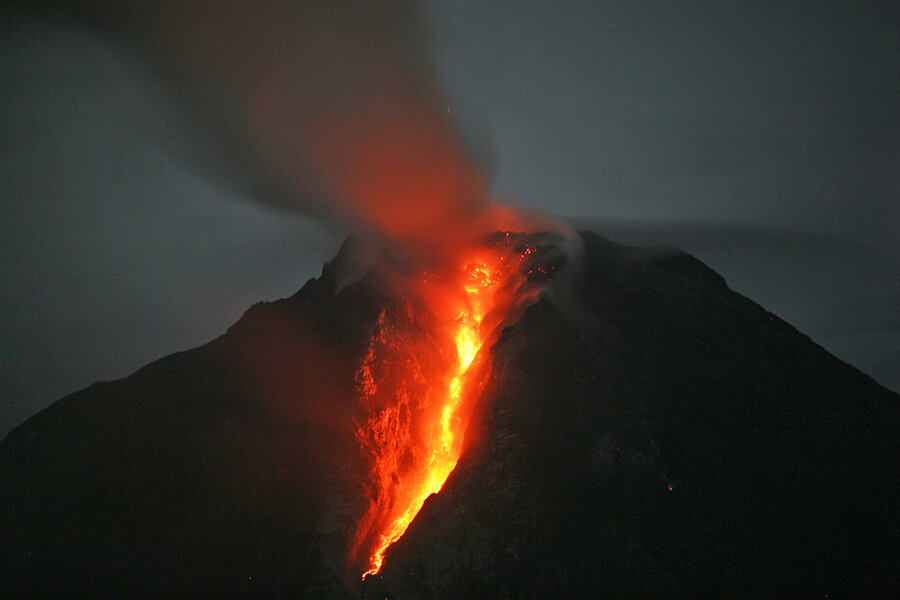Supervolcano eruptions are different from ordinary eruptions, say scientists
Loading...
Not all volcanic eruptions are created equal, suggests a new report on supervolcanoes, the geologic monsters capable of spewing enough ash, pumice, and lava to create mass extinctions and mini ice ages. Bigger eruptions happen much less frequently than small ones, and different forces drive them upward through the Earth's crust.
The volcanoes we're familiar with, which regularly spit up smallish bits of lava – like's Italy's Etna and Alaska's Pavlof – are triggered when semi-molten magma strains its earthen chamber to the point of cracking open, a process known as magma replenishment.
But a supervolcano – a volcano that spews at least 240 cubic miles of deposit, mostly recently during the Middle Paleolithic period – works a bit differently, according to the new findings published in Nature Geoscience. When it bursts open, it's because low-density magma has slowly accumulated beneath a volcano, pushing its way upward through thicker magma, like a beach ball released from under water. Or, like a lava lamp.
Scientists from the universities of Geneva, Bristol, and Savoie began to understand these different dynamics after running 1.2 million Monte Carlo experiments. Named for their casino-like use of random sampling, these computational algorithms play with variables like the volume of magma, its degree of crystallization, or the strength of a volcano's crust, to model systems full of uncertainty.
The study is a reminder that the explosions which have shaken human history – from the ash entombment of Pompeii, Italy in the year 79 AD, to the devastating explosion of the Indonesian volcanic island Krakatoa in 1883 – have been baking soda and vinegar compared to what continues to burble beneath the Earth's crust.
"We estimate that a magma chamber can contain a maximum of 35,000 km3 of eruptible magma," explained lead researcher Luca Caricchi, an Earth scientist at the University of Geneva. "Of this, around 10 per cent is released during a super-eruption, which means that the largest eruption could release approximately 3,500 km3 of magma.
According to the US Geological Survey, the most recent supervolanic eruption occurred about 74,000 years ago at the Toba Caldera in Sumatra, Indonesia. That explosion is estimated to have released 670 cubic miles of "ejecta" and left ash deposits in layers as thick as 2,000 feet. Some scientists have speculated that the so-called Toba Catastrophe may also have left its mark on the human genome, by killing off most of the population and leaving behind only a few thousand breeding pairs.
Wim Malfait, another member of the research team from ETH Zurich, told BBC that out of sight probably doesn't mean out of danger. "This is something that, as a species, we will eventually have to deal with," he said.
"You could compare it to an asteroid impact – the risk at any given time is small, but when it happens the consequences will be catastrophic."








